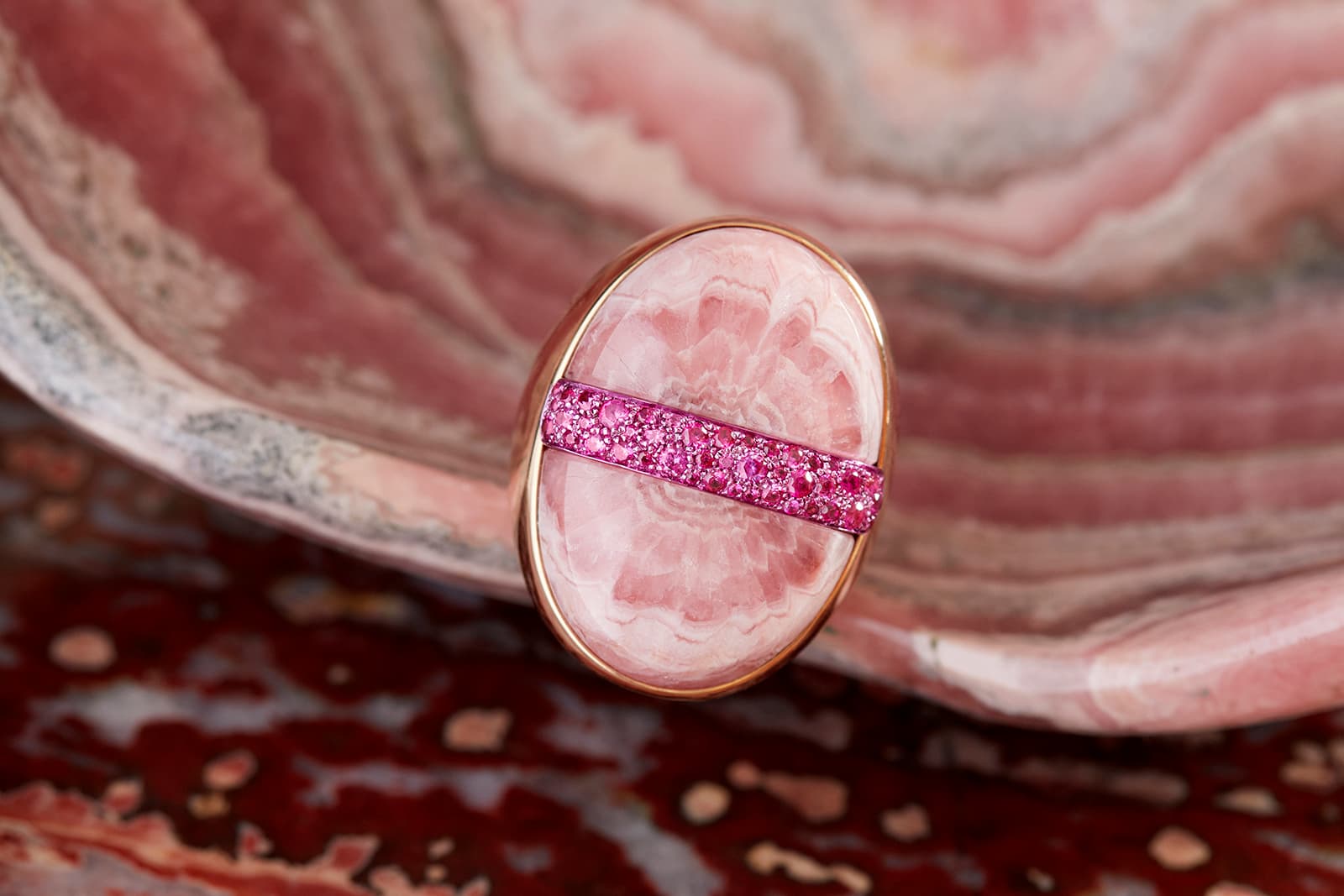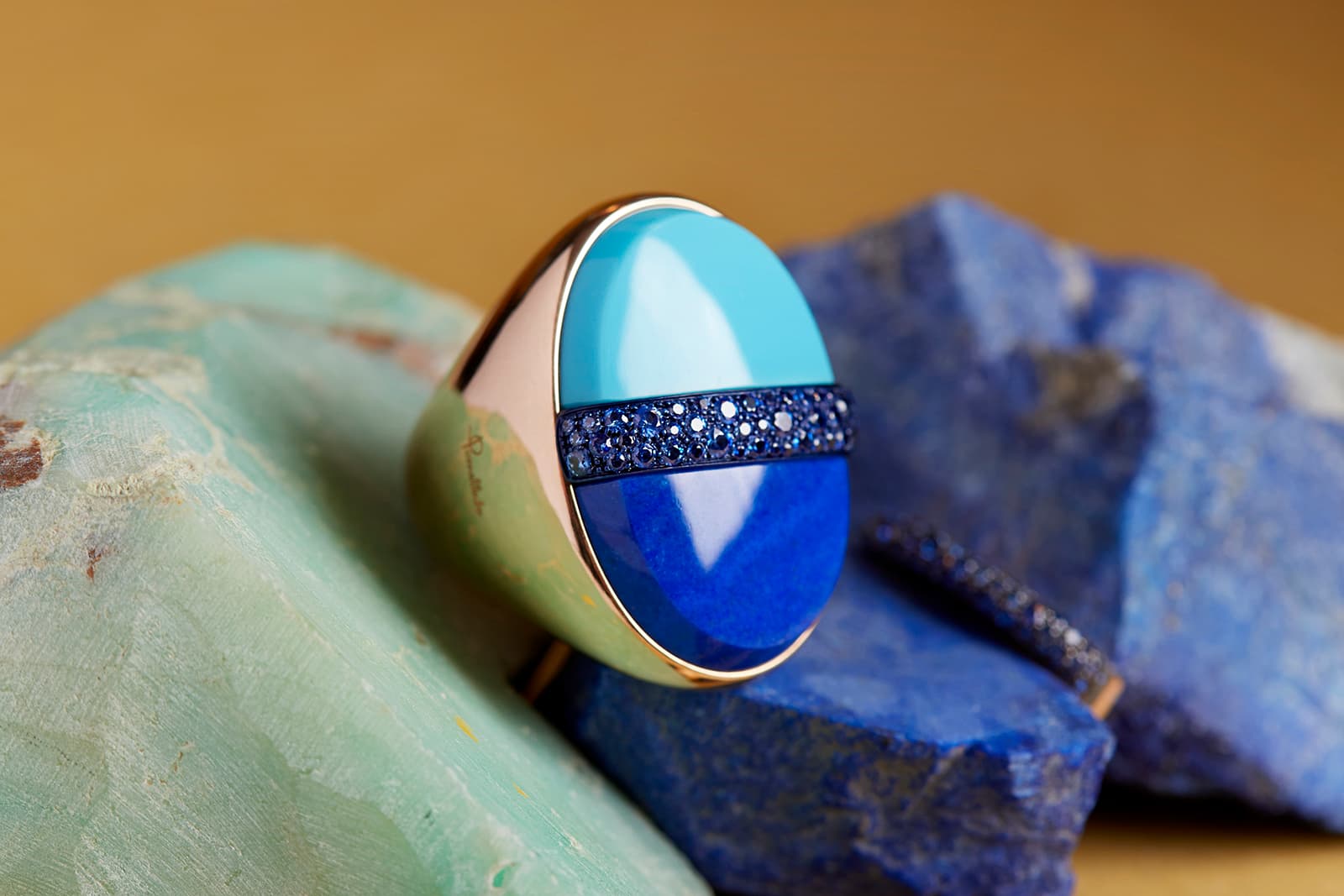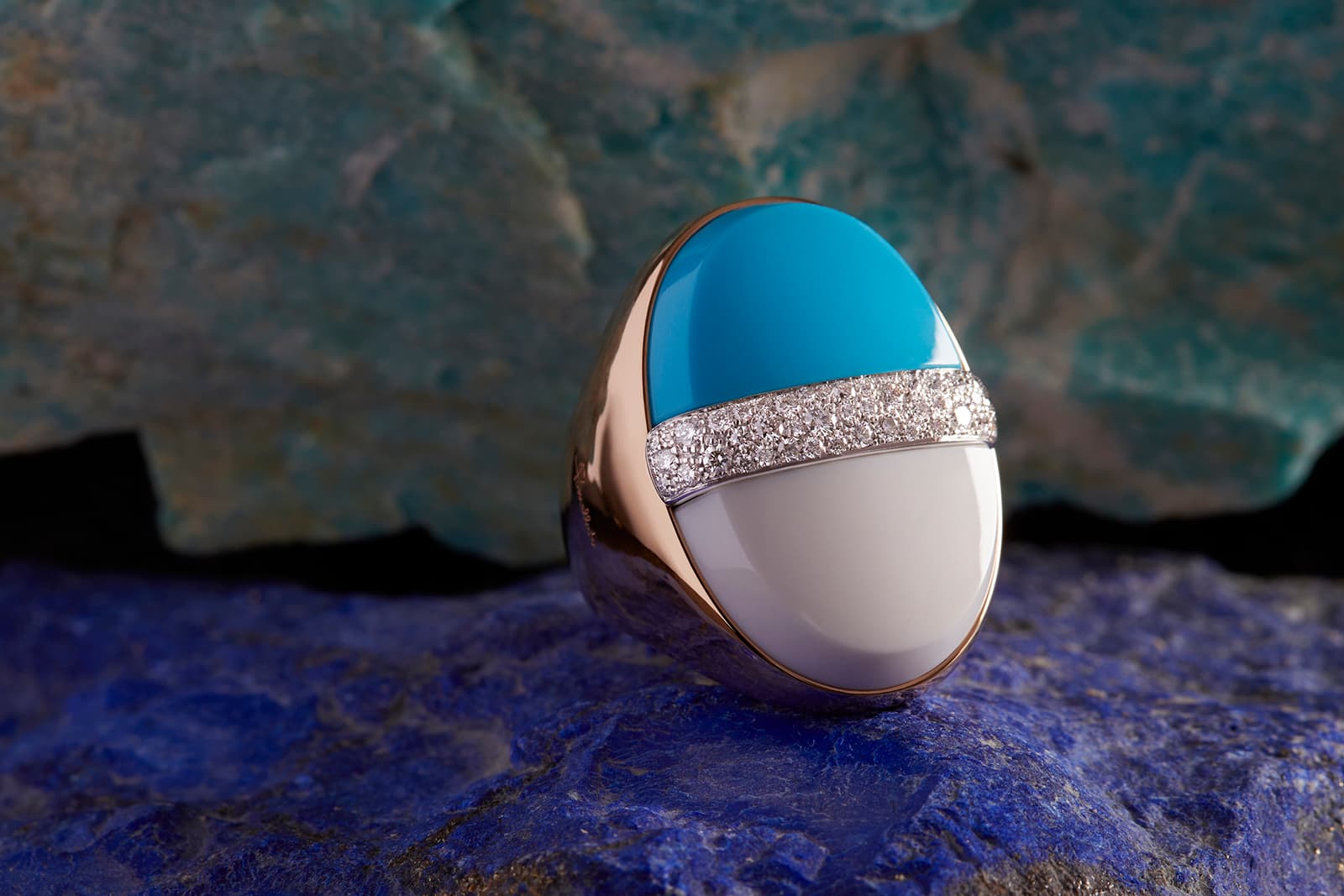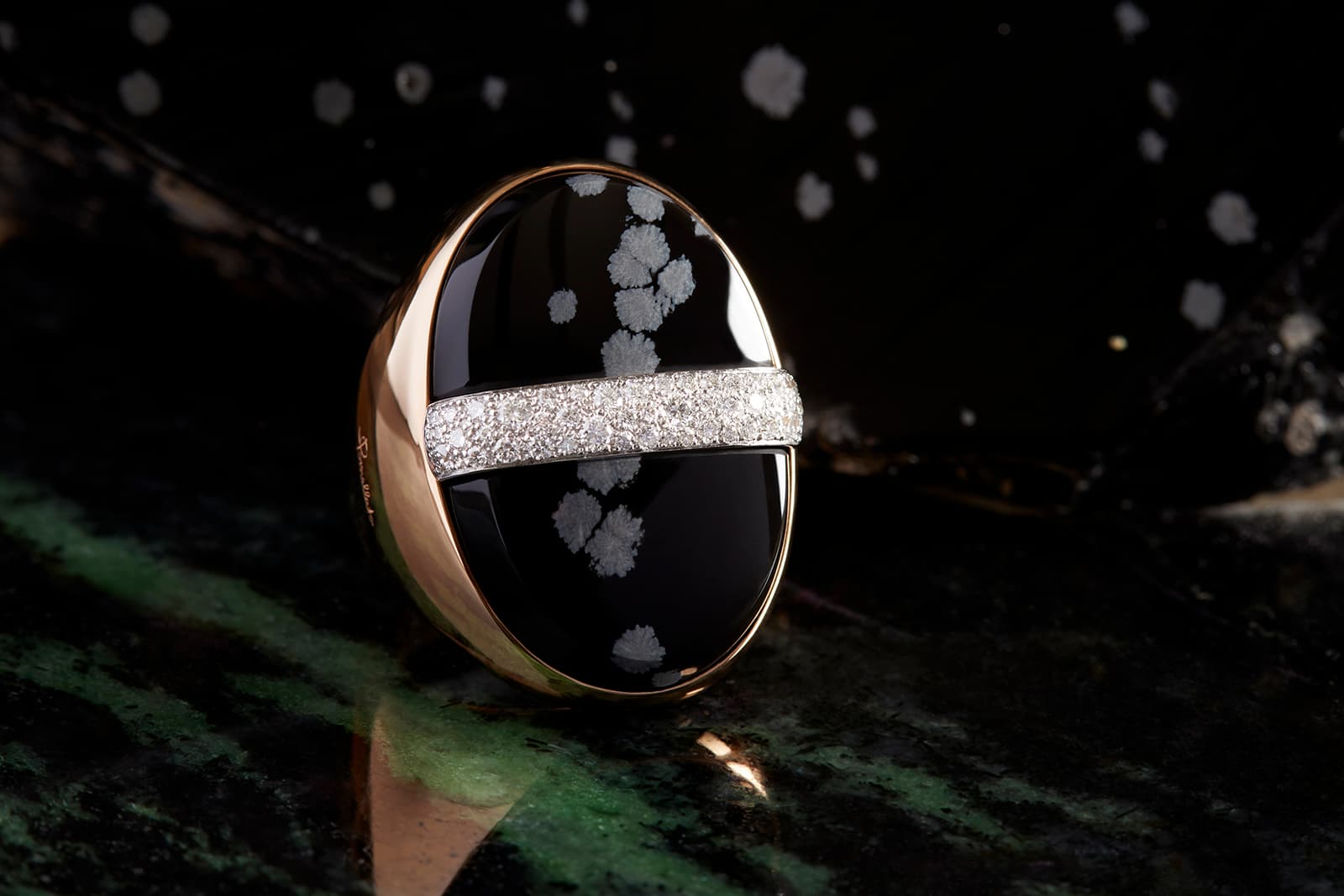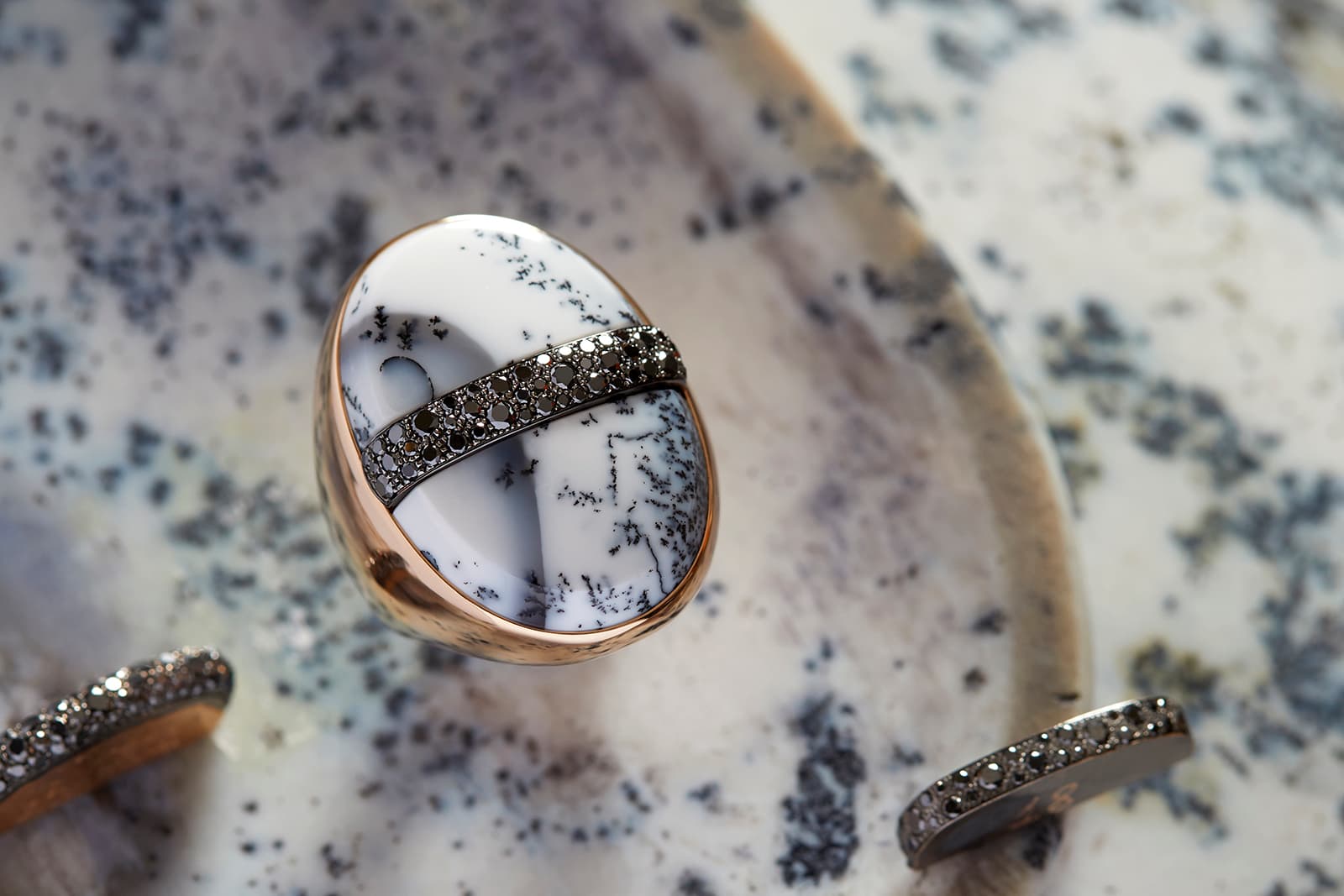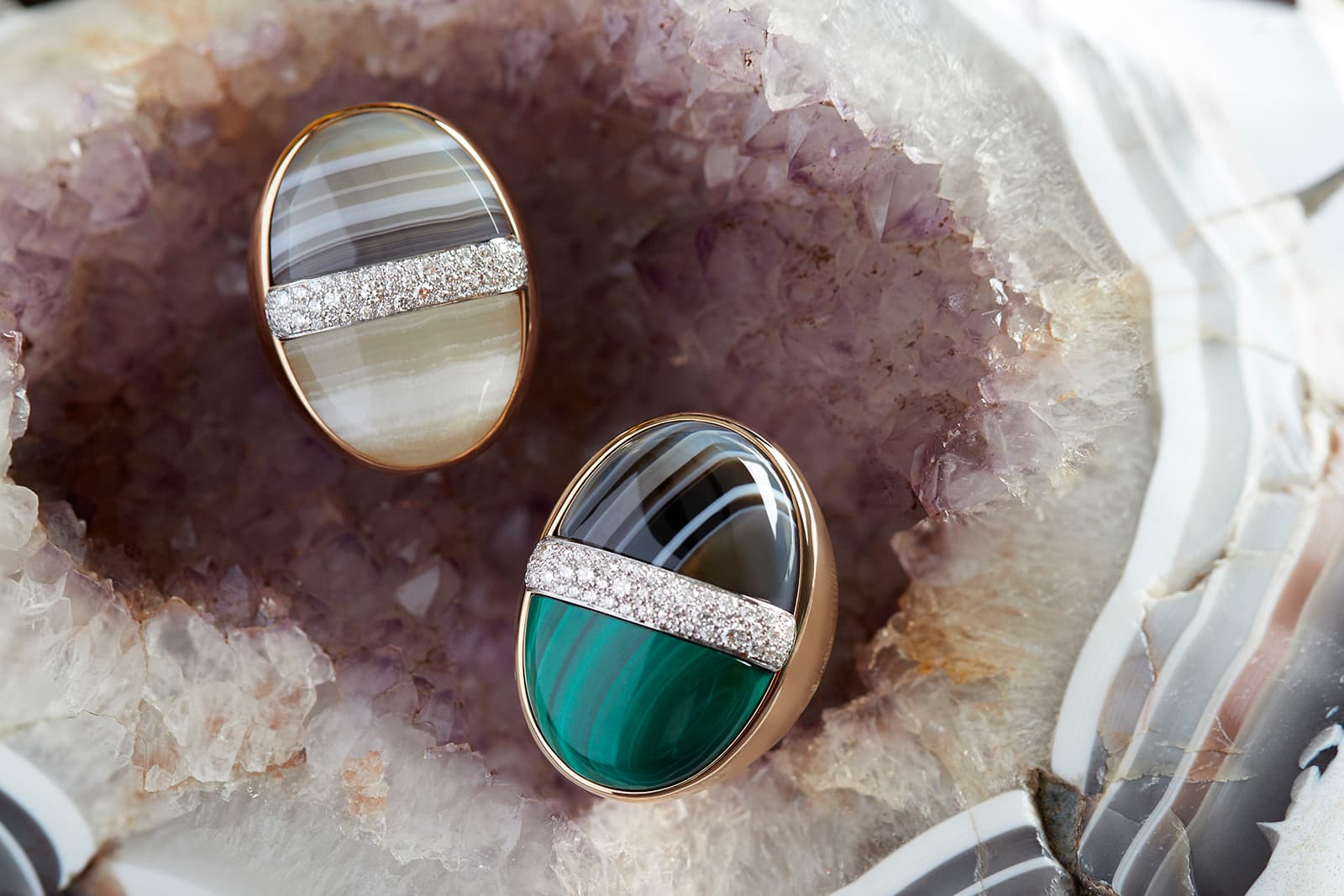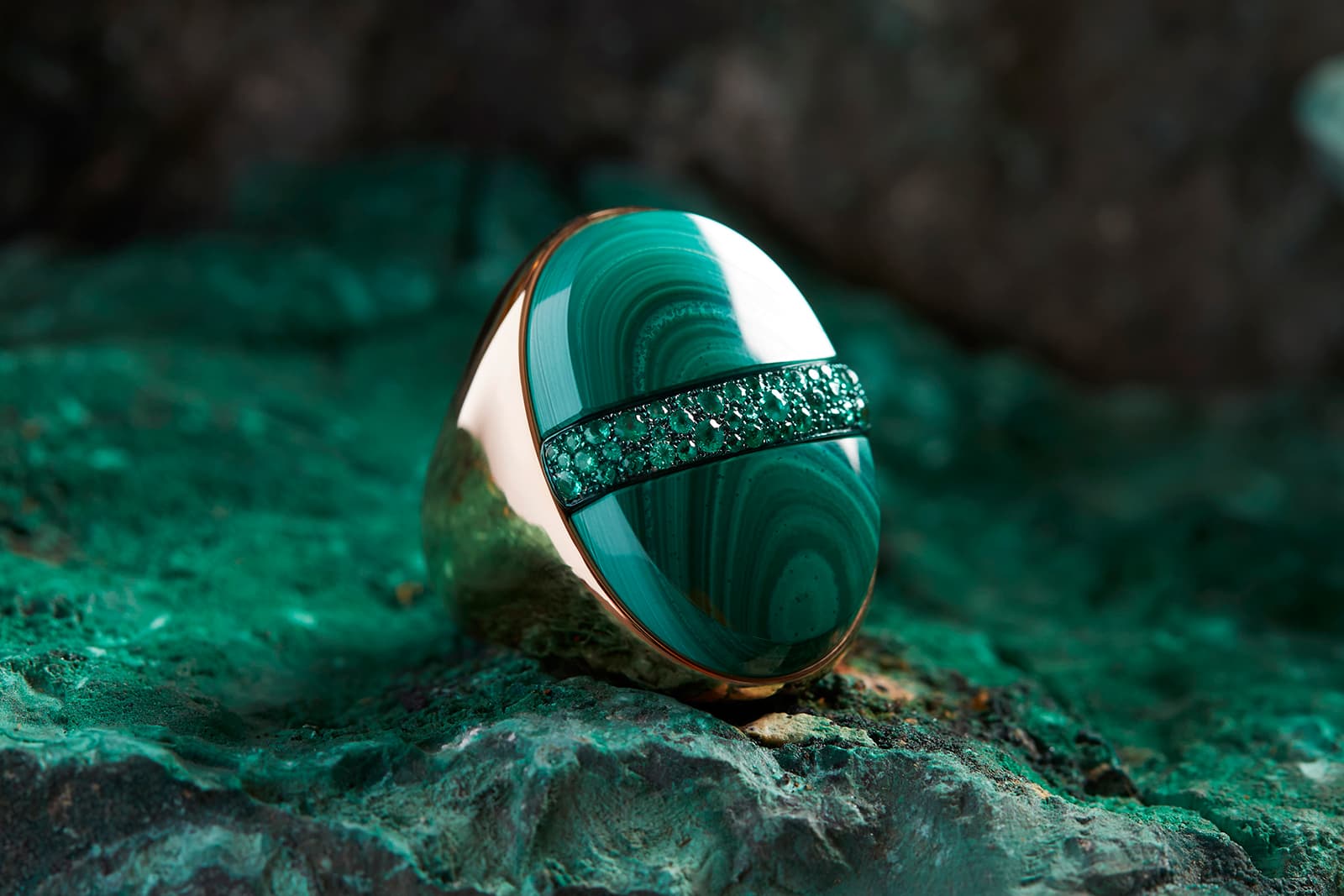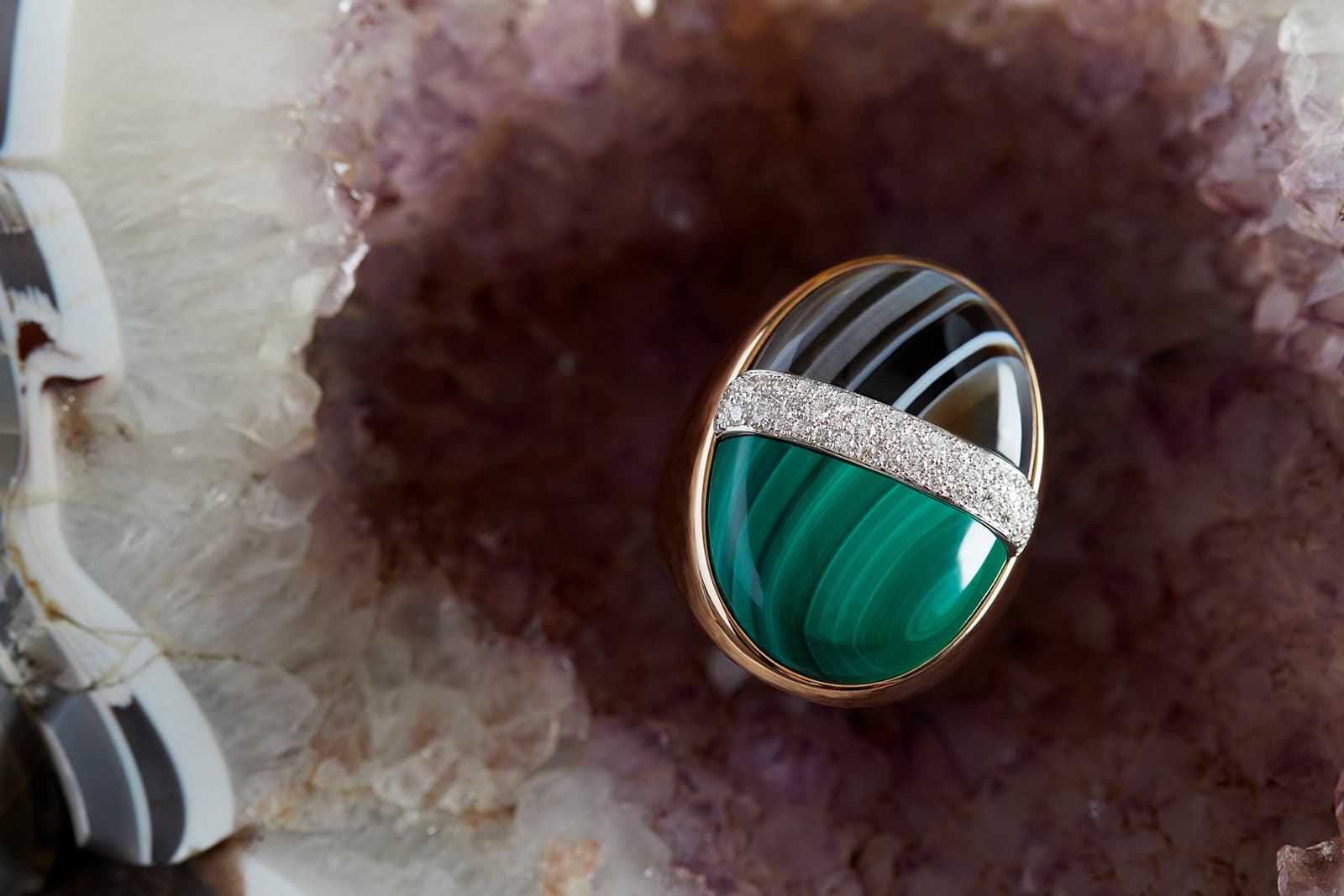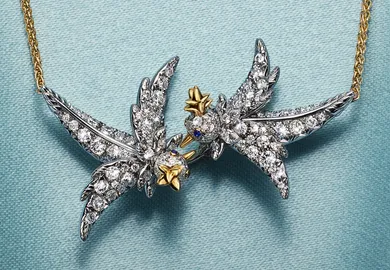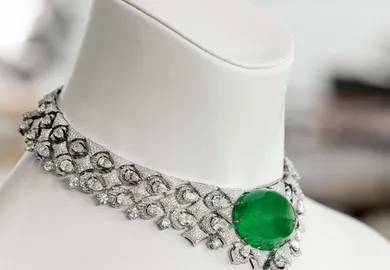
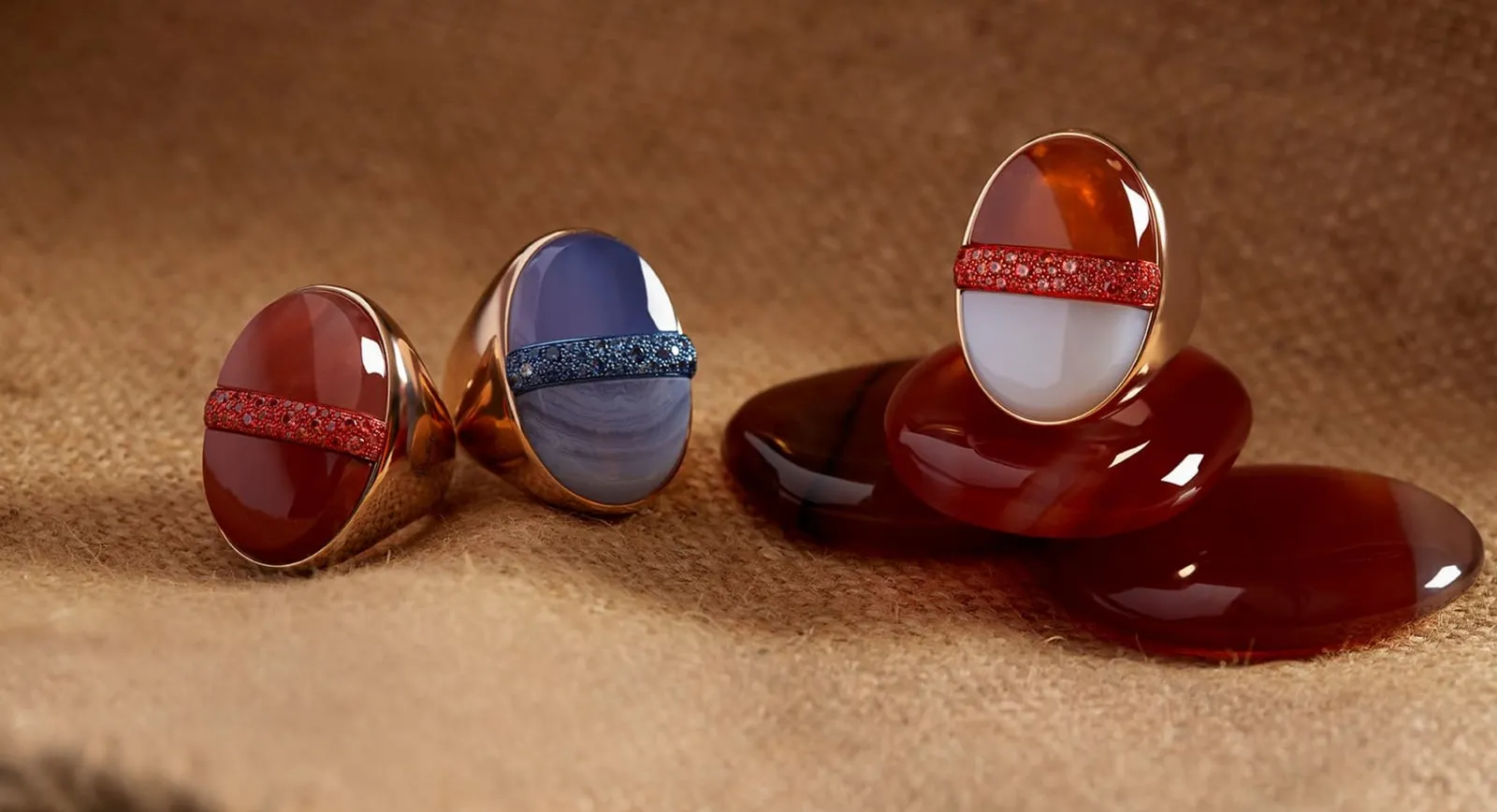
Pomellato: ‘Armonie Minerali’ Ornamental Stone Rings
Ornamental stones continue to dominate the world of high art jewellery with their unusual colours, intricate patterns and matte lustre – which serve to augment the sparkle of the gemstones which they so often accompany in jewellery designs. It is these stones to which the Italian jewellery brand Pomellato have dedicated their latest collection of one-of-a-kind jewellery, entitled Armonie Minerali.
The Armonie Minerali collection contains 38 rings and pendants, characterised by one-of-a-kind combinations of elements, colours, textures, opacity and the brightness of their decorating minerals, which are each divided by a band of pave gemstones. The buff-top gemstones face each other as if in dialogue, and are designed so as to recall the natural beauty of gems, with each possessing a unique pattern and a diversely tinted palette.
This new collection is a collaboration between man and the natural world, where craftsmanship and natural beauty unite in a joyous dance of unexpected combinations to create something totally new. After all, playfulness, with a touch of irony and irreverence, is a defining trait of the Pomellato House. – Vincenzo Castaldo, Pomellato Creative Director
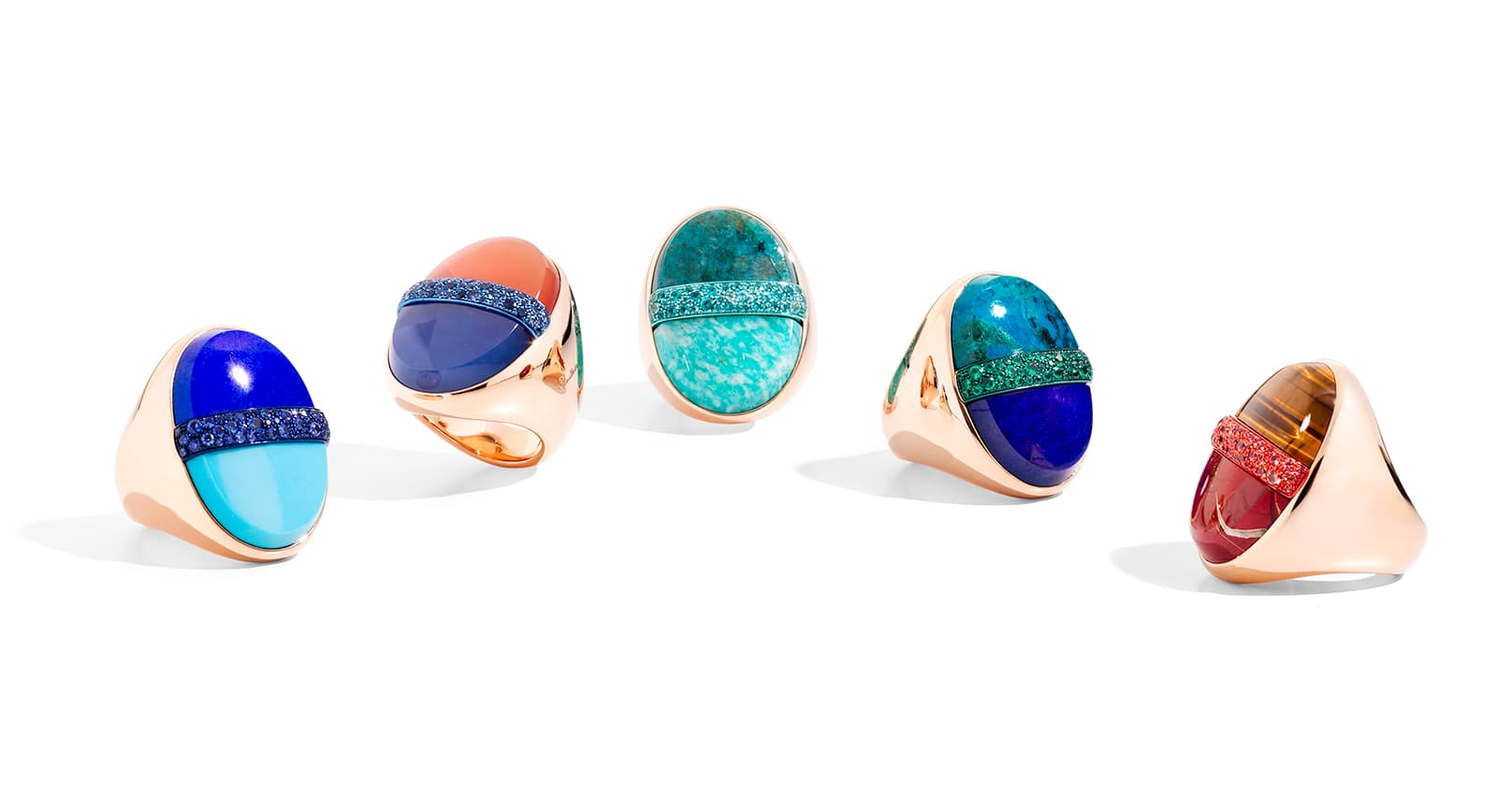
A selection of Pomellato Armonie Minerali collection rings
The brand began this journey deep into the world of rare minerals back in 2017 in their Ritratto collection, as part of the celebrations for the house’s 50th anniversary. In this latest line, Pomellato continues to use mysterious minerals in novel ways, but always paying respect to the unparalleled skill of Mother Nature herself. One of the most colourful design decisions of the entire collection is an exercise in contrast: two different semi precious minerals are placed face-to-face in the same piece of jewellery. Together, they amplify the colour intensity of their neighbouring stone. Subtler colour combinations can be found in rings and pendants that are composed of a single, dissected stone.
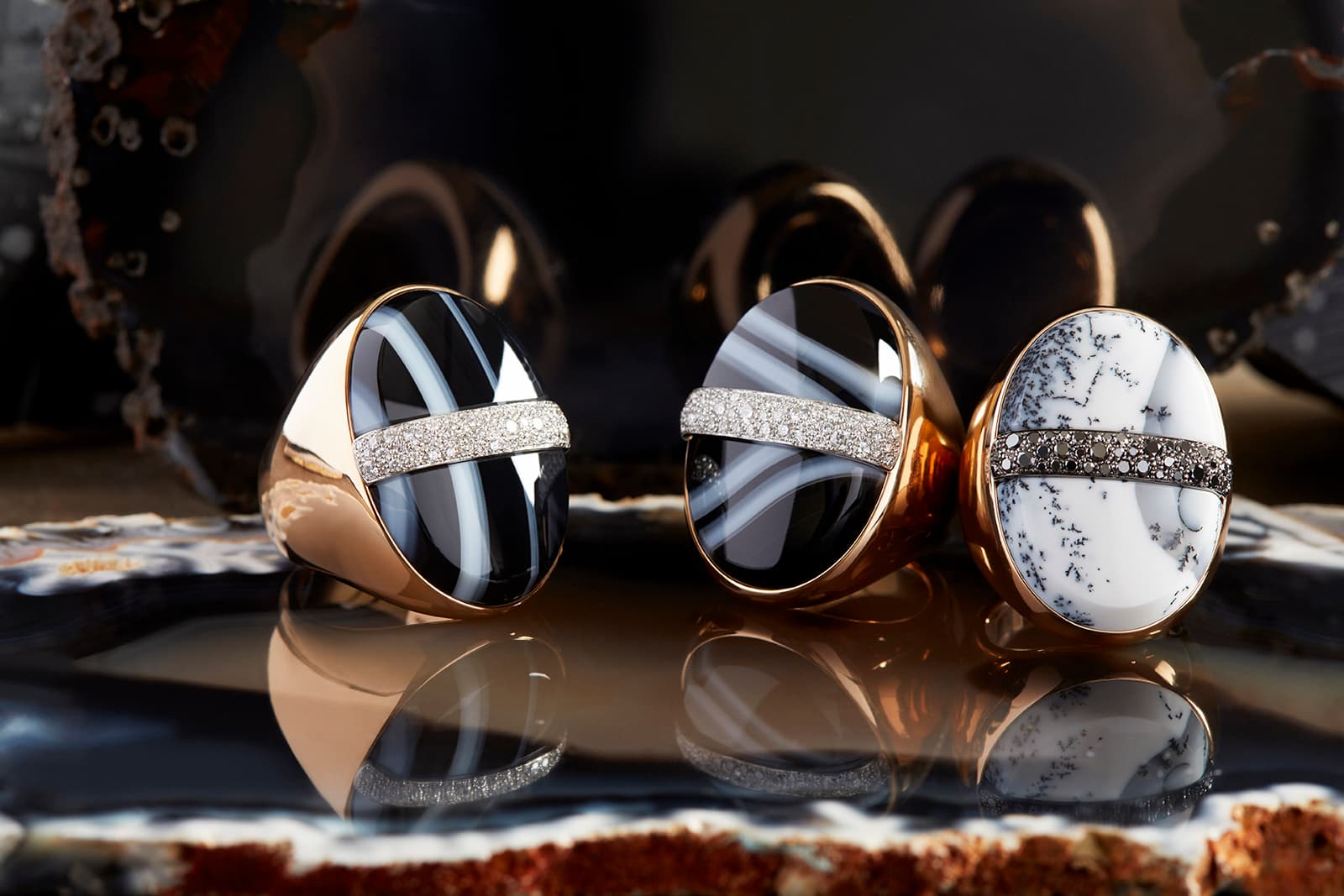
Pomellato Imperial Zebra rings with black and white agate and diamonds, and Japanese Samurai ring with dendritic opal and black diamonds, all in rose gold
In order to understand the vast collection better, the Armonie Minerali was divided into three separate chapters, relating to the creative fields of art, design and music. The first chapter – ‘Black and White Obsession’ – seeks to pair the stones together with a black and white colour palette that reveals the power of minimalism and self-restraint. For example, the dendrite opal in the Japanese Samurai ring recalls the harmony that is so evident in traditional Japanese prints or even in the more unconventional work of the contemporary Japanese artist Yayoi Kusama. Similarly, strips of grey and white agate capture the essence of the unprocessed, graffiti-like canvas of the artist Christopher Wool. On top of this, one finds that Yannis Kunellis’ 1964 work ‘Black Rose’ – the very essence of the Italian ‘Arte Povera’ movement – is also drawn to mind by the erratic forms seen in black obsidian.
It is indisputable that colour prevails throughout the collection! The most extensive and also the most colourful chapter is the second. Entitled ‘Tribute to Colour’, this section of the collection overflows with a seductive assortment of bright candy ornaments that exude sweetness and vitality. This chapter reflects on the work of the architects and designers who have shaped Milan’s landscape in the wake of the destruction of the Second World War. Architects such as Joe Ponti, Luigi Caccia Dominioni, Vico Magistretti and Aldo Rossi – with whom Pino Rabolini, Pomellato’s founder, was personally acquainted. This fanatic optimism of this era of experimentation finds expression in Rabolini’s bright jewels – and the Armonie Minerali collection echoes this original inspiration. The speckled greens of chloromelanite interspersed in the Grass Harp ring hint at Joe Ponti’s glassware. The wave-like shapes and powdery pastel colours of the furniture design of Vico Magistretti and Luigi Caccia Dominioni are transposed into chrysocolla, Paraiba tourmaline and amazonite in the Bora Bora ring. The ‘Orange du Maroc’ piece is also bold in its colour combinations – much like the designers of that great generation. Here we find the use of earthen jasper and orange carnelian, which conjure in the mind the image of a desert mirage.
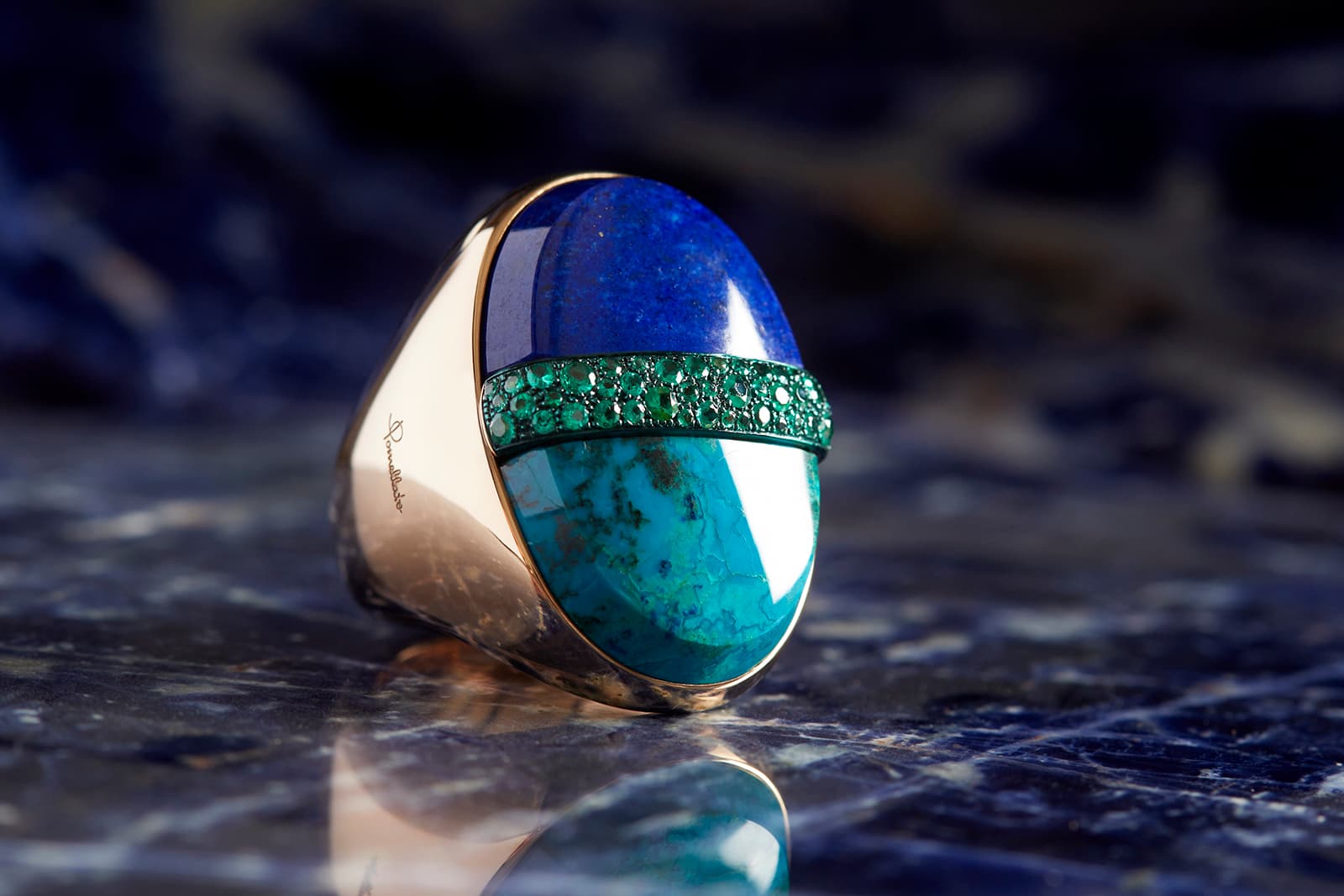
Pomellato Penelope’s Dream ring with lapis lazuli, chrysocolla and emeralds in rose gold
The third chapter – entitled ‘Pattern Hypnosis’ – is the most abstract. It draws its inspiration from music or, more specifically, the primal rhythm of beating drums. It aims at what must surely be almost impossible: to express the vibrations of music through jewellery. This captivating experiment is based on works of art that have successfully managed to represent musical harmonies on canvas. We see this in the concentric pink and white rhodochrosite patterns of the Adagio di Damasco ring – which resembles one of the ‘target’ paintings of Hugo Rondinone. On top of this, we find that the Pomellato masters have reimagined the work of artist Albert Olen, who worked to depict the sound of free jazz in visual form. Here we see a colour clash of green malachite with black and white striped agate in the Sturm und Drang ring.
It seems then, that the jewellery in the collection is the source of limitless new ideas, and it is for this reason that each piece has turned out to be both so different and so spectacular. Vincenzo Castaldo summed up the ethos of the collection as follows: “the circle is complete, but the search for beauty is infinite.”

WORDS
Katerina Perez is a jewellery insider, journalist and brand consultant with more than 15 years’ experience in the jewellery sector. Paris-based, Katerina has worked as a freelance journalist and content editor since 2011, writing articles for international publications. To share her jewellery knowledge and expertise, Katerina founded this website and launched her @katerina_perez Instagram in 2013.
